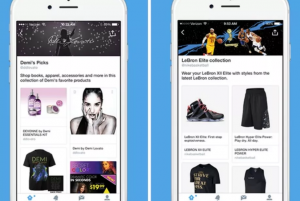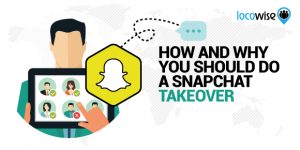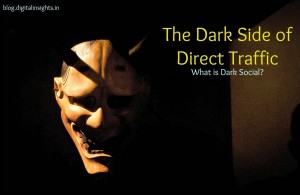
You know the feeling. A potential customer has shown interest in your brand. She’s been to your site a few times, downloaded a couple pieces of content and subscribed to your blog.
Knowing all this, it’s hard to hold back the temptation to throw everything you have — whitepapers, eBooks, webinars, blogs — at her to address her pain points. This is why you’ve been creating content!
Before you hit that send button, step back. It’s not uncommon for a prospect to get overwhelmed when at the receiving end of a content firehose. Enter the drip campaign. These carefully thought-out emails offer “drops” of content at spaced-out intervals to keep your brand top of mind until your prospect is ready to contact you.
But do they work? Let’s dive in and investigate.
What’s So Great About Drip Campaigns, Anyway?
Drip (or automated) campaigns are great for building trust with your customers and prospects. The repeated, relevant interactions that come with these campaigns can help create this trust.
Because the customer journey isn’t a straight line, these emails also can help nudge customers and prospects along an ideal decision-making path.
Do Drip Campaigns Really Work?
In today’s world of instant news updates, social streams and quick gratification, it’s getting harder and harder to stand out in inboxes. Let’s look at a few successful drip campaign examples.
Example 1: Senior Scam Education
An innovative aging-in-place program wanted to educate its prospects about senior scams, a common issue affecting older adults. To do this, the brand created a piece of gated content about how to avoid these scams. Once someone downloaded this piece, they would be enrolled in a five-email drip campaign featuring additional pieces of scam-avoiding advice, and finally receive a call-to-action to attend one of the brand’s seminars.
What We Learned
Overall, the campaign performed well, getting above-average opens and clicks for the industry.

Looking at the data, we discovered that although the campaign was performing well, people disengaged at emails three and four.

Like email two above, emails three and four contained a brief video clip of advice from the Ohio Attorney General’s Office. However, it’s possible that a five-email campaign was too much for some people. Or it could have been that our language didn’t clearly specify that, a) these videos are different from the videos in the previous email, or b) these videos are very short (30 to 45 seconds). To remedy this, we are currently evaluating if all three videos in the second email, shortening the entire campaign to three emails, will be more effective.
Example 2: A Medical Product Demonstration
A well-known medical device manufacturer wanted to educate the hemodialysis market about the benefits of using a vascular access coordinator in dialysis clinics, and get kidney care professionals to request a demo of its hemodialysis monitor.
When someone downloaded its vascular access coordinator piece, he or she was enrolled in a three-email drip campaign that would end in a product demonstration call-to-action.
What We Learned
Like the example above, this drip campaign performed well with open and click-through rates surpassing the industry average.

Since the campaign’s launch, the manufacturer has seen the following product demonstration request results:
Though the above statistics seem a little low, these results are quite impressive for this client considering the campaign was sent to such a limited and niche audience.
What’s in a Successful Drip Campaign?
As these examples demonstrate, a good drip campaign has a central goal—whether that’s to get the recipient to request a consultation or demo, make a purchase or set up an appointment.
Use Data
Whether you want someone to schedule a consultation, sign up for a free trial, or make a purchase, your drip campaign needs to be centered on data. Who from your list has visited relevant pages, downloaded relevant content or taken some other kind of relevant action? Once you have your campaign up and running, don’t forget to take a look at how it’s performing. Doing so gives you insight into whether you have too many emails or if a certain call-to-action should be reworked.
Create Different Campaigns for Different Audiences
Not only should you base your campaign on what actions someone has or has not taken, you also should break out campaigns according to whether someone is a loyal customer, a prospect or knows nothing about your brand.
Include Great Content
While it might be tempting to spend most of your campaign educating the recipient why he or she should do business with you, don’t do it. What makes the above examples so successful is the content. Each email hits on a pain point for the reader—like keeping your investments safe or staying up-to-date on CDC initiatives—and doesn’t showcase the brand until the last email.
Alternative Ways to Nurture Leads into Customers
Keep in mind drip campaigns won’t work for your brand if you have a small contact list or no contact list at all. Also, consider the audience you’re sending to. If you know their pain points and how they prefer to engage with your brand, you may find email isn’t the most effective tactic.
Here are a few alternatives.
A One-Off Targeted Email Send
You have a great resource you think your list will love, but it’s not necessary to have an entire drip campaign around it—you just want to get it into the hands of your audience. Create an email that’s targeted in its content and to whom you send it to.
In the example below, the email is targeted based on the content—blood sugar awareness—and while this is an issue that could affect anyone, we sent this email to anyone who viewed previous content on our website about blood sugar or diabetes.

Because we sent this email to a targeted list based on the recipient’s actions, we saw much higher engagement rates than we would have had we sent it to our entire list.

Lead Flows
You’re browsing a website, when suddenly a pop-up takes over what you’re reading, forcing you to take action before you can continue your journey. Annoying, right? Lead flows do what pop-ups are meant to do—capture leads, further engage someone down the sales funnel—without hijacking their browsing experience.
A new tool from HubSpot, lead flows enter a screen from the top, bottom or side, and encourage the visitor to take an action. The medical device manufacturer mentioned above uses lead flows to encourage site visitors to request product demos, download content or subscribe to its blog. Here are two examples:
![]()
 After being live for a little over three weeks, this lead flow already has netted seven new contacts—an achievement in this niche market.
After being live for a little over three weeks, this lead flow already has netted seven new contacts—an achievement in this niche market.
Retargeting
Another option is to use demand generation tactics to retarget someone with an offer or to take an action once they’ve left your site.
In the example below, the aging-in-place company retargeted site visitors who came to the landing page for a specific type of content, but did not convert. The company used demand generation to retarget these visitors on Facebook.

The company saw 82 conversions in one month using retargeting on Facebook.
Should I Use a Drip Campaign?
That’s up to you and your brand’s specific goals. Drip campaigns work well for establishing trust between a brand and customer or potential customer. But depending on your audience and industry, if your recipients are busy or don’t usually engage with email, it might not be the best option.
It also may not be the best option if your contact list is slim to none, or if you lack the staff or resources to respond to an increase in product demonstration requests, purchases or event attendance, for example.
Digital & Social Articles on Business 2 Community
(74)
Report Post












